
Trapezites iacchus, the Iacchus skipper, is a butterfly of the family Hesperiidae. It is found in the Australian states of New South Wales and Queensland.
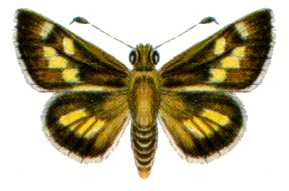
Trapezites luteus, the rare white spot skipper, is a butterfly of the family Hesperiidae. It is found in Australia in the states of New South Wales, Victoria, South Australia and Tasmania.
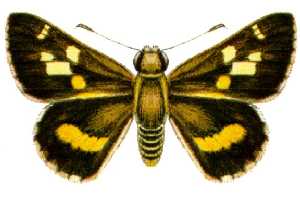
Trapezites maheta, the Maheta skipper or northern silver ochre, is a butterfly of the family Hesperiidae. It is found in Australia in Queensland and northern New South Wales.

Trapezites petalia, the common white spot skipper or black-ringed ochre, is a butterfly of the family Hesperiidae. It is found in the Australian states of Queensland and New South Wales.
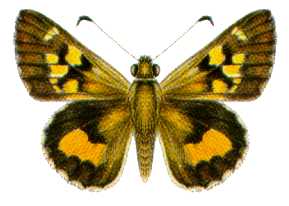
Trapezites phigalia, commonly known as the heath ochre or phigalia skipper, is a species of butterfly in the family Hesperiidae. It is endemic to Australia, where it occurs in New South Wales, Queensland, South Australia and Victoria. It is primarily found in eucalypt woodlands, open forests, and coastal healthland habitats.

Trapezites symmomus is a butterfly of the family Hesperiidae. It is found in Queensland, Victoria, South Australia and New South Wales.
Trapezites praxedes, commonly known as the southern silver ochre or praxedes skipper, is a species of butterfly in the family Hesperiidae. It is endemic to Australia, where it occurs in New South Wales, Queensland and Victoria.

Lomandra obliqua, known as fish bones and twisted mat-rush, is a small wiry ground-covering flowering plant found in eastern Australia. It is a widespread plant seen on the coast and tablelands. The foliage superficially resembles a fern, but creamy/yellow flowers form on clusters in spring. Leaves are two-ranked, somewhat glaucous and twisted.

Lomandra gracilis is a perennial, rhizomatous herb found in New South Wales and Queensland in eastern Australia.

Lomandra filiformis, commonly known as wattle mat-rush, is a tussock forming perennial herb that is native to Australia. It is sparsely tufted, with strap-like leaves and yellow flowers. It grows in dry sclerophyll forest and grassy woodland, usually on well-drained rocky or sandy soils.

Lomandra spicata is a rainforest flowering plant in the family Asparagaceae. It is found in eastern Australia.
Lomandra montana is a perennial, rhizomatous herb found in eastern Australia.
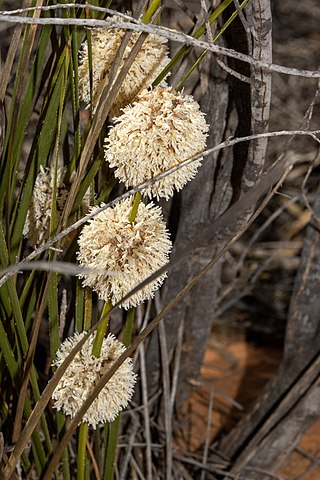
Lomandra leucocephala is a perennial, rhizomatous herb found in Australia. The plant is sometimes referred to as Irongrass because the plant is known to be tough and has a grass-like look.
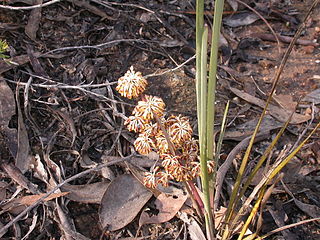
Lomandra multiflora, also commonly known as many-flowered mat rush, mat rush and many flowered mat-lily, is a perennial, rhizomatous herb found in Australia and Papua New Guinea. The mat rush is distributed widely in the region and common within its preferred growing conditions. Its conservation status is considered not to be of concern and risk.
Lomandra patens is a perennial, rhizomatous herb found in Australia.
Lomandra collina is a perennial, rhizomatous herb found in Australia.
Lomandra glauca is a perennial, rhizomatous herb found in Australia.
Lomandra elongata is a perennial, rhizomatous herb found in eastern Australia.

Lomandra laxa is a perennial, rhizomatous herb found in the Australian states of New South Wales and Queensland.

Lomandra bracteata is a species of plant in the Asparagaceae family, first described in 1962 by Alma Theodora Lee.














